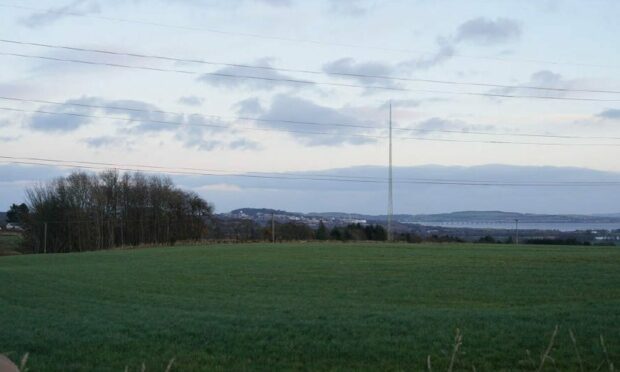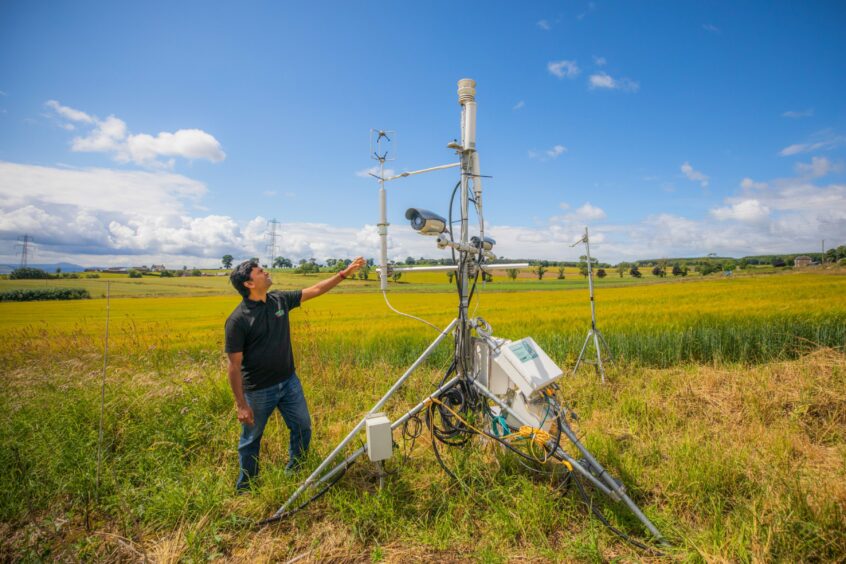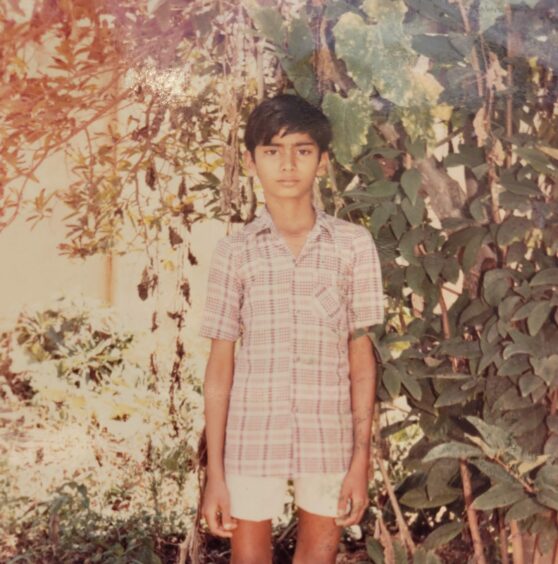A 330ft climate mast for measuring greenhouse gas emissions is coming to Balruddery Farm in Angus in September.
The mast, which will stand at approximately 328ft (or 100 metres), will collect data on the emissions from across Scotland.
Dr Jagadeesh Yeluripati is co-leading the project at the James Hutton Institute (JHI).
He said: “This tall tower will gather important evidence on emission reduction and the current state of things.
“We should hopefully see the trend that emissions are reducing as we aim for net zero.
“It’s going to be extremely useful for validating what is really going on in real time.”
If all goes as planned, the mast should be erected by September.
Why will the Angus climate mast be so tall?
At Balruddery Farm, there are already a series of “very small” sampling masts, which each stand at a height of five metres. The new Angus climate mast will be 20 times as tall.
Why? The higher the mast, the more data it can get.
Jagadeesh explained: “On the top of the mast, we measure greenhouse gas emissions – including Methane, Nitrous oxide and CO2.
“Why do we do this at 100 metres? The taller the tower, the bigger the footprint. It is going to have a footprint of 700km squared.”
The tall structure will draw in air at the top, before it travels down a hollow tube to be analysed.
He continued: “There is no operational tall tower like this in Scotland. There are four in England, but Scotland is basically a blind spot.
“Once we measure at the top of the tower, we can discover the emissions that are coming from that footprint.”
Then, they can look through the data from that large area and segregate it depending on the sector that emitted it.
So will Scotland reach net zero targets?
Scotland aims to reach net zero by 2045, and has interim targets of 75% by the year 2030, and 90% by 2040.
The climate mast will help keep tabs on the country’s progress towards these goals.
“We are measuring the data, whether its positive or not,” the project’s research leader continued.
“The point is to measure the effectiveness of mitigation or even a failure. If we fail, then the emissions will not reduce and somebody needs to measure and report that.”
His hypothesis though, is that Scotland will reach net zero if the country sticks to the plan.
If not, he says, climate change conditions will continue to worsen and there will be an increase in severe weather.
To anyone still doubting climate change, Jagadeesh says their project will add to the wide range of data that’s already out there.
Scientist at the heart of vital climate research
Jagadeesh and his team are dedicated to bettering the environment, a passion which he said began in his childhood.
He grew up in India, in a family home which valued nature and every animal – even the dangerous ones.
“I grew up in a very small town, where we were always very close with nature and wildlife,” he said.
“Lots of snakes used to come into our house in the rainy season, but my family never allowed them to be killed, even the deadly ones.
“Valuing nature is an integral part of life – it’s not that I’m doing something for nature, that’s not the attitude that I grew up with. We are part of it and every river, every plant matters.
“That is the way I see the world.”












